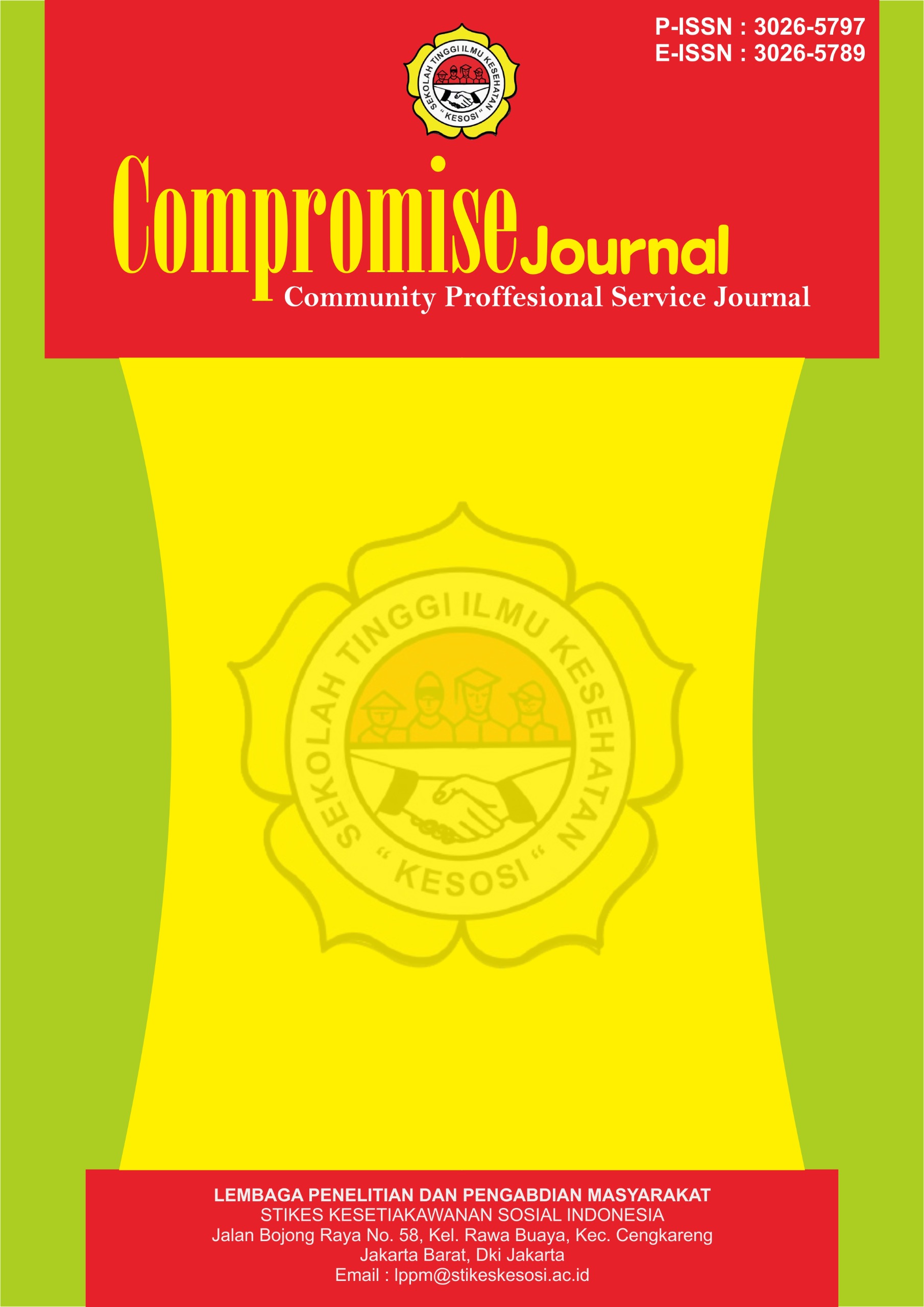Analisis CT Scan Urografi dengan Klinis Batu Saluran Kemih di Instalasi Radiologi Rumah Sakit Bhayangkara Makassar
DOI:
https://doi.org/10.57213/compromisejournal.v1i4.35Keywords:
CT Scan, Urinary Tract StonesAbstract
Background: Urinary tract stones are the growth of hard, stone-like masses in the human urinary tract. The prevalence of urinary tract stones (BSK) in Indonesia is still not known for certain, but estimates suggest that there are around 170,000 cases of BSK every year. CT Scan is a radiological examination modality for diagnosing urinary tract stones with a sensitivity level of around 95%-100% and a specificity level of around 96%-98% for detecting urinary tract stones, so CT Scan is considered the gold standard in diagnosing this condition.
Research Objectives: This study aims to determine the management of CT Scan Urography in clinical urinary tract stones in the Radiology Installation of Bhayangkara Hospital, Makassar.
Method: This research used descriptive qualitative research with a case study approach, the research subjects consisted of 3 radiographers, 1 radiologist, and 1 sending doctor. Data collection was carried out through several stages, namely observation, interviews and documentation.
Results: The results of research at the Radiology Installation of Bhayangkara Hospital, Makassar. The procedure for CT Scan Urography examinations in clinical urinary tract stones is that the patient drinks 750 ml of fresh tea until he feels like he wants to urinate, then the examination is carried out. The role and effect of giving plain tea can increase HU (Hounsfield Unit) density and also speed up diuresis, thereby helping to shorten examination time. The excess caffeine content of plain tea can speed up the process of increasing urine volume, thereby shortening the examination time..
References
Irianto K. Anatomi dan Fisiologi. ALFABETA,cv; 2017.
Ekatrina Wijayanti M, Adi Mulyanto V, Panti Rapih Yogyakarta S. Faktor-Faktor yang Berhubungan dengan Kejadian Urolithiasis di Ruang Rawat Inap dan Poli Spesialis Rumah Sakit di Semarang. Vol. 1, Health Research Journal of Indonesia (HRJI). 2023.
Sulaksono T, Syahrir S, Palinrungi MA. Profile of urinary tract stone in Makassar, Indonesia. Int J Res Med Sci. 2019 Nov 27;7(12):4758.
Veranita. Modalitas Pemeriksaan Radiologi untuk Diagnosis Batu Saluran Kemih. 2023;
Yudha S, Hadisaputro S, Ardiyanto J, Indrati R, Mulyantoro DK, Masrochah S. BENEFITS OF STEEPING BLACK TEA AS A NEGATIVE CONTRAST MEDIUM ON CT UROGRAPHY EXAMINATION MANFAAT SEDUHAN TEH HITAM SEBAGAI MEDIA KONTRAS NEGATIF PADA PEMERIKSAAN CT UROGRAFI. J Appl Heal Manag Technol. 2020;2(2):70–7.
SYAFADA, FENTY. POLA KUMAN DAN SENTIVITAS ANTIMIKROBA PADA INFEKSI SALURAN KEMIH. 2013;
Anggraeny SF, Soebhali B, Sulistiawati S, Nasution PDS, Sawitri E. Gambaran Status Konsumsi Air Minum Pada Pasien Batu Saluran Kemih. J Sains dan Kesehat. 2021 Feb 28;3(1):58–62.
Hadibrata E, Kedokteran F, Lampung U, Ir Sumantri Brojonegoro No J, Meneng G, Rajabasa K, et al. FAKTOR-FAKTOR YANG BERHUBUNGAN DENGAN TERJADINYA BATU GINJAL [Internet]. Available from: http://jurnal.globalhealthsciencegroup.com/index.php/JPPP
Oleh D, Ivanali K. MODUL FISIOLOGI SISTEM UROPOETIK. 2019.
P.P HS, Istiqomah AN, M.N IM. KAJIAN LITERATUR PERBANDINGAN PEMERIKSAAN KLINIS UROLITHIASIS DENGAN BNO-IVP DAN CT- UROGRAPHY. 2020;
Damayanti O, Firdaus MR. Penatalaksanaan Pemeriksaan CT Scan Urologi Non Kontras dengan Klinis Nephrolithiasis di Instalasi Radiologi Rumah Sakit Advent Bandung.






